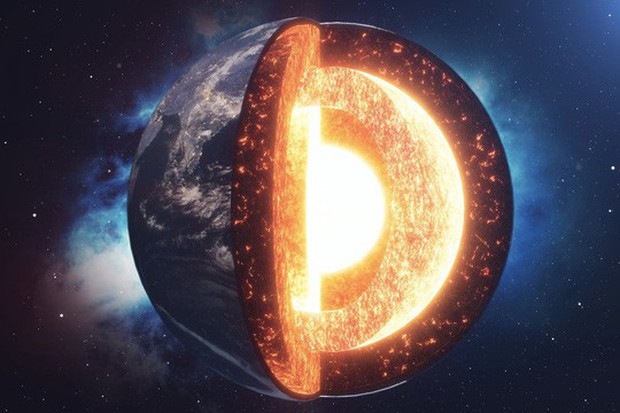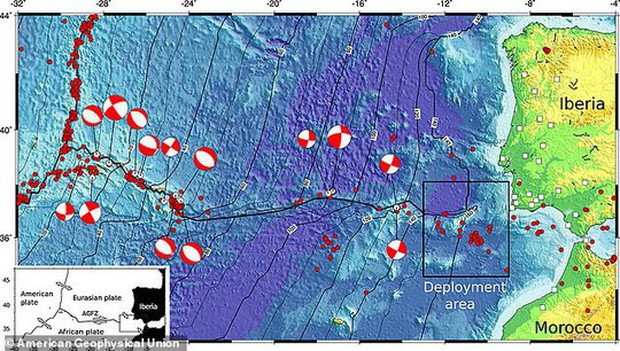Off the coast of Portugal, the earth’s crust can flake off, split in two, a phenomenon never seen before.
The unusual geological activity in the Horseshoe Abyssal Plain off Portugal has confused geologists. New research by marine geologist João Duarte of the Dom Luiz Research Institute at the University of Lisbon (Portugal) has come to a startling conclusion: the earth is flaking off.
Scientist João Duarte’s team created a computer model from the data collected at Horseshoe. The results showed that an Atlantic tectonic plate was transforming, which could make the ocean smaller while slowly moving European lands closer to Canada.
The team believes that the spalling process begins with the intrusion of seawater on the surface of the ocean floor plates, reacting with the rocks to form a green mineral. This process, called serpentinization, will gradually weaken the lower layer of the ocean floor and cause it to peel off.
Map of the area of the earth’s crust peeling off
This is the first time that a model has directly described the process of “flaking” of the crust, that is to say that part of the bottom of the tectonic plate peels off from above and can initiate a zone of. “subduction”.
The phenomenon of subduction has occurred several times in Earth’s history, causing Earth’s continents to form multiple supercontinents before disintegrating again due to new plate tectonic activity.
One can imagine that in the middle of a great ocean, the land pushes a giant jaw and slowly swallows the ocean. In a remote location on the other side of the continent, other deep plates have a chance to emerge. Where the ocean was swallowed up, the ocean area gradually narrowed, the continents were brought together and formed a super continent.
If that happens, it will be the start of Pangea Proxima, the hypothetical future supercontinent that many scientists have described in their studies. However, you can rest assured that this is a very slow process. Scientists predict that Pangea Proxima will only form in the next 50 million years. It is estimated that in the 4.5 billion years of Earth’s history, giant tectonic plates borne on the backs of ancient continents collided three times to form a supercontinent.
Daily Mail, Live Science




